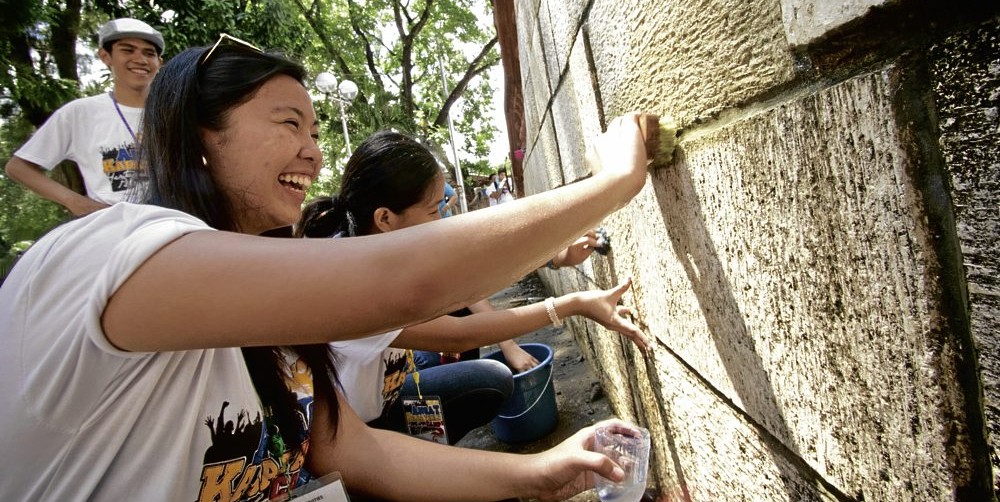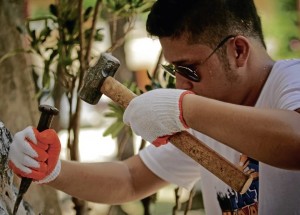

The youth as inheritor, protector and promoter of cultural heritage was the focus of Angat Kabataan, the unique yearly gathering of youth leaders from all over the country during National Heritage Month. This year, Angat Kabataan, supported by the National Commission for Culture and the Arts, was held May 1-5 in Iloilo.
The heritage pilgrimage featured talks providing updates on the conservation of 39 Roman Catholic churches declared National Cultural Treasures by the Philippine government and World Heritage Sites by the United Nations Educational, Scientific and Cultural Organization (Unesco).

Other talks and workshops focused on Jefarca, the heritage movement from Pulilan, Bulacan; Escuela Taller, the school promoting Hispanic design and craft skills; and Society of Ecclesiastical Archivists of the Philippines (SEAP).
Cynthia Rivera, consultant of the Intramuros Administration, discussed the importance of cultural heritage.
Rivera said cultural heritage was everywhere, with old buildings and structures being the most obvious examples.
She said heritage was also intangible, consisting of highly perishable pieces of culture. “Intangible heritage may cover oral literature, mythology, and even spirituality.”
Rivera said the next generation should redefine culture and foster heritage. “Continuity in culture entails certain technologies we need to protect. You should strive for a society that stands for something.”
Starting at home
Fr. Gaspar Sigaya, OP, archivist of the Philippine Dominican Province, discussed Church archives—diocesan and religious—and their relevance.
Sigaya told youth leaders every diocese must have its own archives. “The archives serve as the cultural goods of the Church,” he said. “Even correspondence and photos should be kept.”
Sigaya noted that building the habit of keeping records should start in one’s household. “That transmission and keeping of records serve as pastoral instruments,” he explained.
Sigaya said the archives the Catholic Church maintained were very helpful in keeping and recovering the historical memory of the Filipino people.
Lito Zulueta, Arts and Books editor of the Philippine Daily Inquirer, talked about cultural heritage and media.
“Media being popular and a channel for wide dissemination serves as an engine of culture,” he said.
Zulueta noted that culture provided a people with a “sense of identity.” He also said there were many ways for cultural heritage and conservation to be popularized or “mainstreamed.”
However, he warned against reducing cultural heritage as mere tourism showcase, which could be exploited for commerce.
First community museum
To provide youth delegates an idea how they could help promote cultural heritage, there was a talk on Jefarca Arts and Historical Society, an organization dedicated to heritage preservation which started from the initiative of high school students in Pulilan, Bulacan.
“The group started in 1991 with relief operations and tree-planting activities, which later shifted to cultural preservation,” said Andrew de Guzman, president and founding member of Jefarca. “In 1997, we decided to build Museo San Ysidro de Pulilan.”
The museum is dedicated to preserving Pulilan’s local history. It is the first community museum in Central Luzon.
Jefarca is also involved in environmental preservation, having initiated the Biak-na-Bato National Park conservation project in 2000. It has also embarked on the Pulilan River conservation project.
The organization is conducting a restoration project of the Pulilan Gabaldons, early public schools constructed by Americans for Filipino children in 1907-1915.
Escuela Taller gave youth leaders the building blocks of cultural conservation.
“We conduct restoration of heritage sites, not protection,” said architect Michael Manalo, executive director of Escuela Taller de Intramuros.
The school was initiated in Spain in the 1980s for heritage-building conservation and later brought to the Philippines.
It began with 75 apprentices ages 17-25, all from Baseco Compound in Port Area, Manila. The apprentices were taught 18th- and 19th-century construction techniques in carpentry, masonry, stone-, brick- and wood-carving, and metalwork.
During the heritage camp, portions of the façade of San Joaquin Church in San Joaquin, Iloilo, were restored by Angat Kabataan delegates with help from Escuela Taller instructors.
Angat Kabataan 2012 was sponsored, aside from the NCCA, by the Catholic Bishops Conference of the Philippines’ Permanent Committee for the Cultural Heritage of the Church; the Archdiocese of Jaro; San Agustin Museum of Manila; the local government units of Iloilo City, Miag-ao and San Joaquin; University of San Agustin; Escuela Taller; and Marsman.

